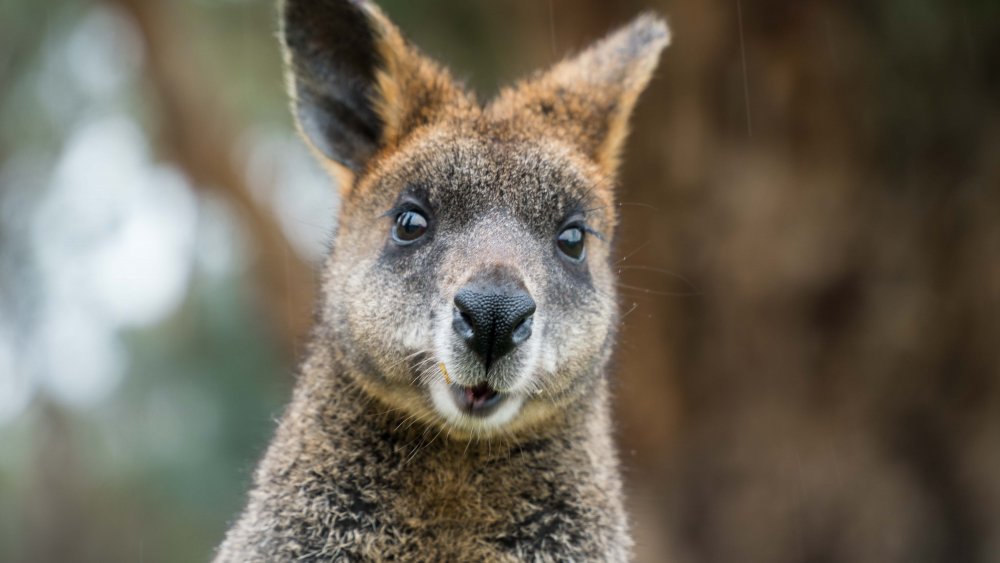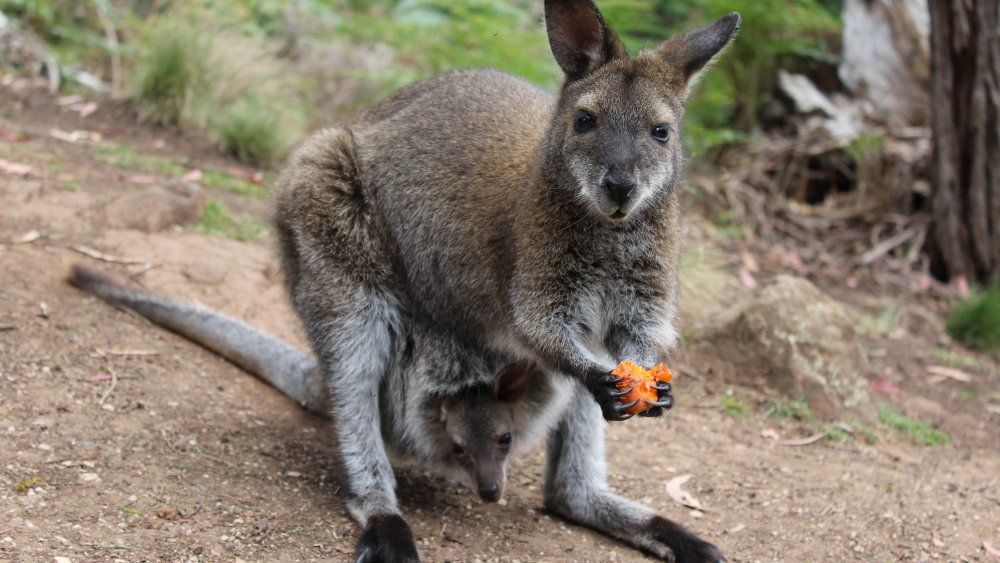Here's How Wallabies Ended Up In Ireland
Wallabies are a cute species. They have long legs, pointy ears, and they hop around with babies in their front pouches; they're basically miniature kangaroos. And like kangaroos, wallabies are native to Australia and some neighboring islands, per National Geographic. But, as it turns out, wallabies have gone global; an entire colony of wallabies is living on the island of Lambay off the coast of Dublin, Ireland.
We know what you're thinking. Ireland is just about as far from Australia as you can get, both in terms of distance and climate — how could wallabies possibly be living there? Well, as you can guess, they didn't get there naturally.
According to the Smithsonian Magazine, wallabies were first introduced into Lambay Island by the wealthy Baring family. Lambay has been owned by the Barings since 1904; Cecil Baring, the original purchaser, dreamed of turning the island into a home for exotic animals. Per Ireland's TheJournal.ie, Cecil introduced all sorts of unusual animals to Lambay, including peacocks, exotic reptiles, "rheas," "kinkajous," and other animals you've probably never heard of. But apparently Cecil didn't do enough research, as few of these species survived in Lambay's climate.
Then along came Cecil's son, Rupert Baring. Rupert followed in his father's footsteps; in the 1950s, he decided to bring wallabies to Lambay Island. While that might sound like a bad idea, TheJournal.ie reports that Lambay has a similar climate to that of Tasmania — an island in southern Australia with a thriving wallaby population.
Wallabies were brought to Ireland's Lambay Island by the Baring family
Rupert Baring's belief that Lambay could be a suitable home for wallabies was, thankfully, proven correct. When the Barings introduced a number of wallabies into Lambay in the 1950s and 60s, the animals took well to their new home. This wasn't super surprising, however; the Smithsonian Magazine explains that wallabies are well-known for their ability to survive under new conditions. (Plus, their thick coats probably helped with the cold.)
A couple decades later, a fortunate coincidence allowed Lambay's cohort of wallabies to grow even further. Per the Smitsonian, the Dublin Zoo's wallaby population grew rapidly in the mid-1980s. Soon, the zoo had more wallabies than it knew what to do with. Peter Wilson, the zoo's director, was familiar with the wallaby situation on Lambay, and he figured that some of the zoo's extra wallabies could survive well with the existing pack on the island. As a result, Lambay Island soon found itself with seven new wallabies, diversifying the gene pool.
Fast forward to today, and there are estimated to be over 100 wallabies roaming the island of Lambay. That's a relatively small number, but Lambay's wallaby population is intentionally kept under control for the sake of ecological balance, according to TheJournal.ie. Even so, Ireland's wallabies have proven to be a big hit among tourists — but few get the chance to spot the curious creatures.

